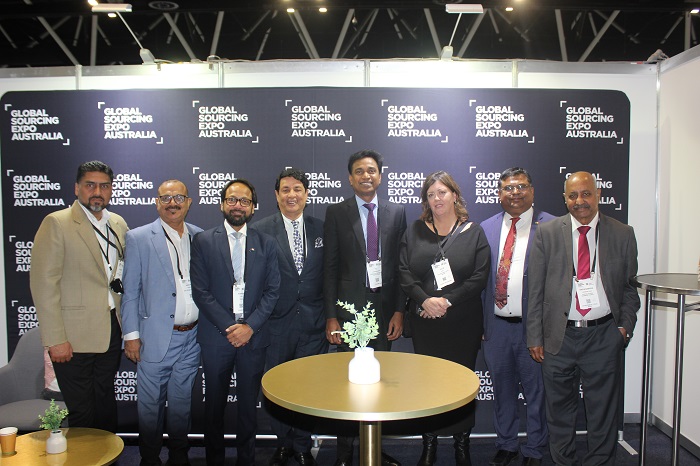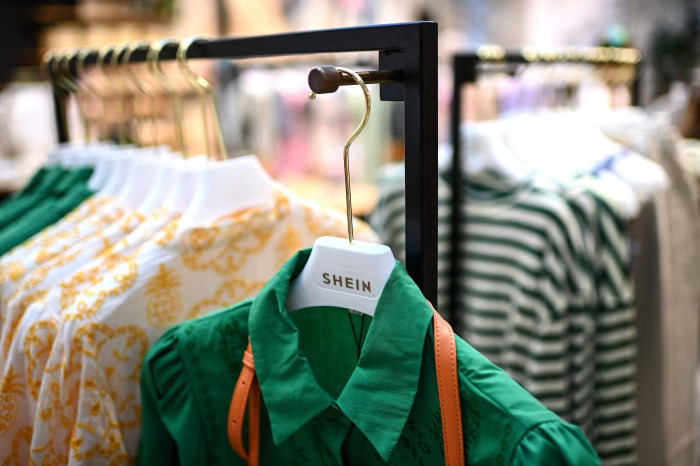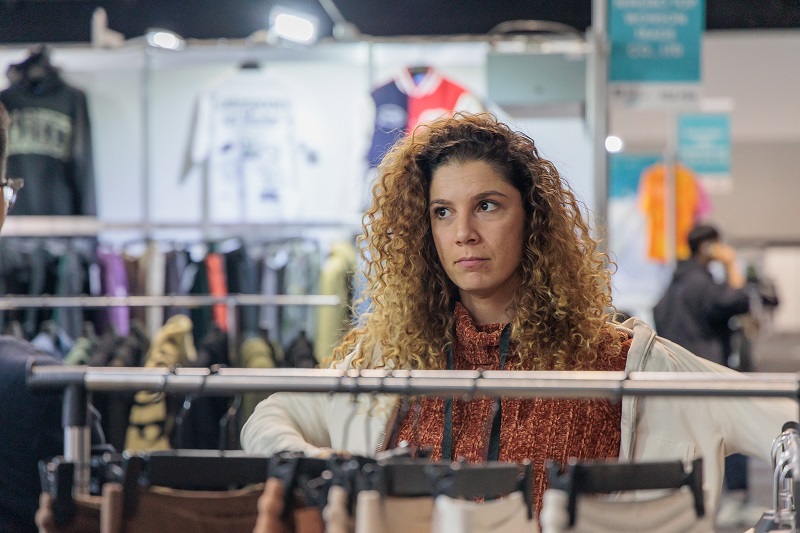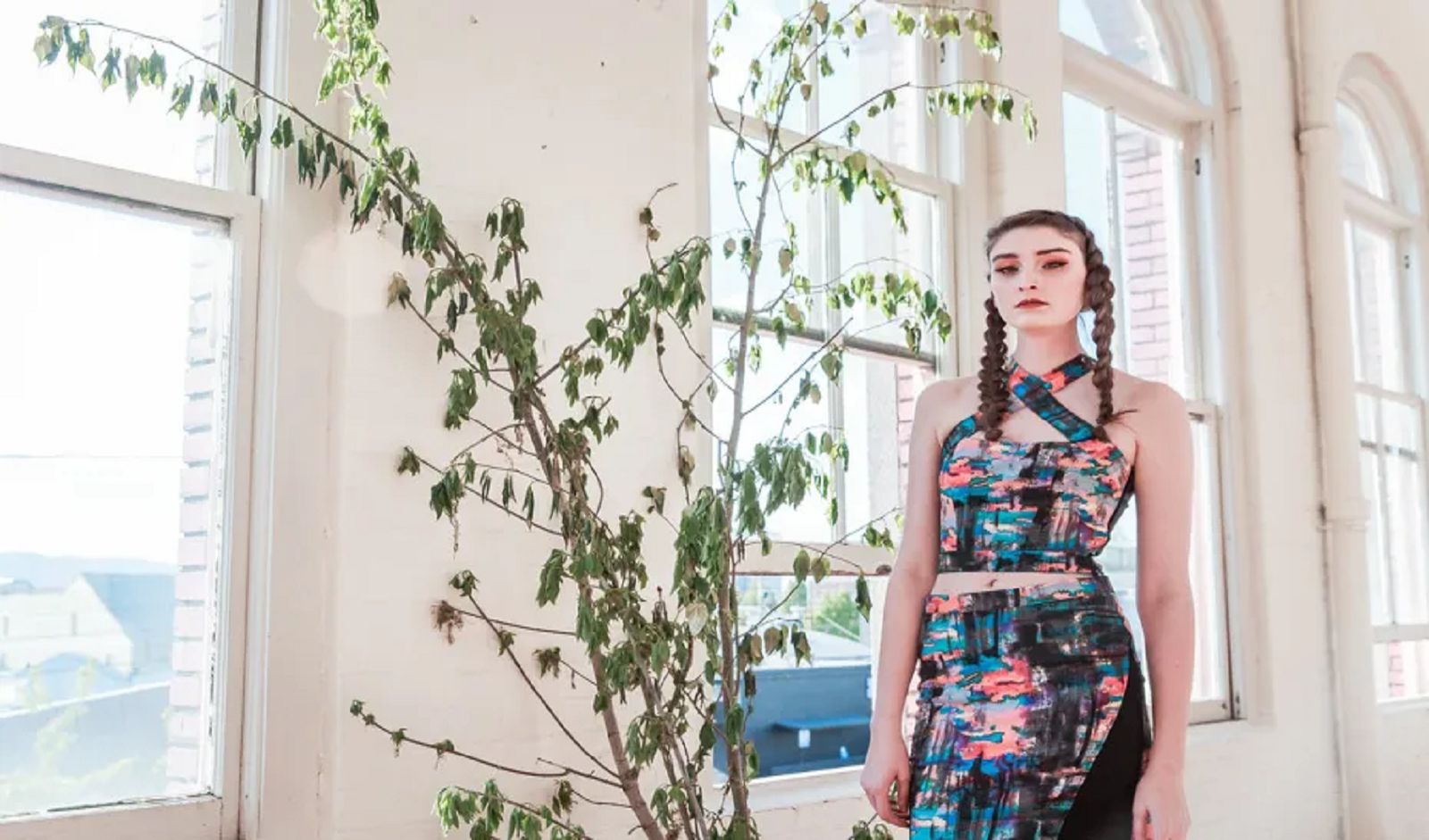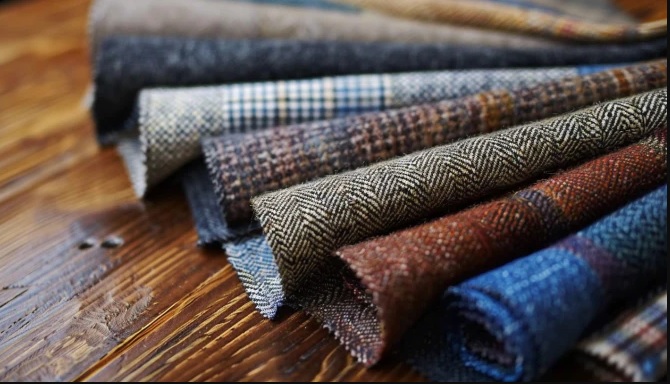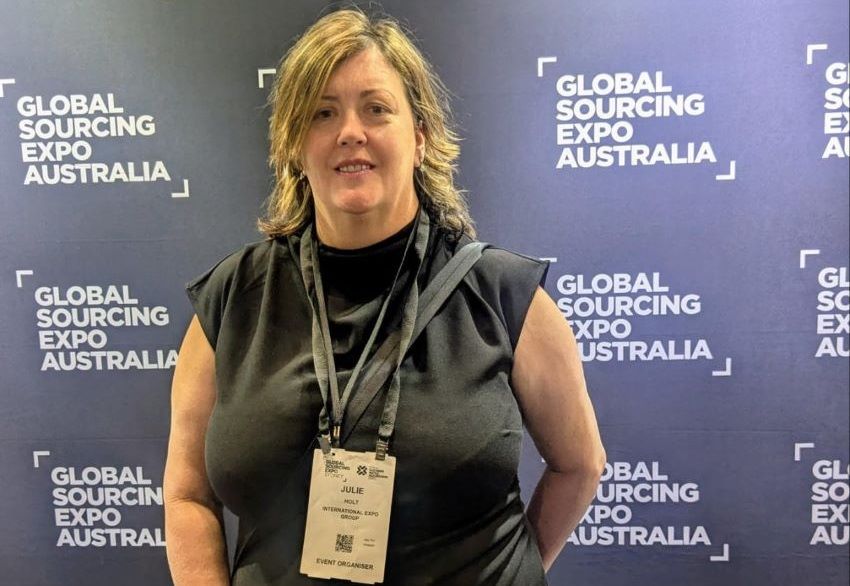FW
Italian company Pitti Immagine Uomo will host a few events at its next edition to be held in Florence from January 10 to 13. It would show how borders between fashion, sportswear and athleisure are always more blurred and reciprocally interacting. Pitti Uomo is one of the world’s most important platforms for men’s clothing and accessory collections and is also used for launching new projects in men’s fashion.
The next edition of the international menswear show will host ‘Golden Goose Deluxe Brand’ among its special guests and events. The Italian brand founded in 2000 by Francesca and Alessandro Gallo will celebrate the 10th anniversary from the launch of their iconic sneaker within an event-installation at Stazione Leopolda as Special Project @ Pitti Uomo.
Another crossover project will be showcased. Cottweiler for Reebok will be the designer project of Pitti Uomo’s January 2017 edition, a merger between sportswear, fashion and street wear. London menswear label Cottweiler designed by Ben Cottrell and Matthew Dainty will launch a debuting collaboration collection with Reebok. Brit style icon, Paul Smith will be the special guest of this edition.
"The UK is likely to get only a trade deal with the EU ‘along the same lines’ of what the EU has concluded with Canada, South Korea and Japan, said EU chief Brexit negotiator Michel Barnier. The UK’s own ‘red lines’ on Brexit (no freedom of movement, no jurisdiction for the European Court of Justice, the right to sign independent UK trade deals with third countries, etc.) ruled out anything more extensive."

The UK is likely to get only a trade deal with the EU ‘along the same lines’ of what the EU has concluded with Canada, South Korea and Japan, said EU chief Brexit negotiator Michel Barnier. The UK’s own ‘red lines’ on Brexit (no freedom of movement, no jurisdiction for the European Court of Justice, the right to sign independent UK trade deals with third countries, etc.) ruled out anything more extensive.
EU deals with other countries

The EU-South Korea free-trade deal was concluded in 2009 and came into force partially in 2011. It is essentially a tariff-reduction trade deal covering goods such as cars, textiles, electronics, chemicals and some agricultural products. It is supposed to be the bloc’s most ambitious overseas trade deal till date. The deal also relaxes Korean foreign ownership rules in telecoms, and liberalises rules on environmental and shipping services.
The EU recently inked the free trade deal with Japan. This agreement also liberalises the bilateral goods trade, primarily agricultural exports. For instance, tariffs on EU beef and pork will be reduced. For EU cheese, the tariffs are eliminated altogether. There’s also some opening up of the Japanese market to EU services firms in the telecoms and transport sectors.
The Canada-EU deal, known as CETA, provisionally came into force in September. Again, its focus is on the reduction of goods tariffs. Agricultural exports also stand to gain. Tariffs on cars, clothing, chemicals and machinery are also slashed to zero. On services, there is some opening up in financial services, telecoms, transport and post.
What is not covered
The difference between these free-trade deals and the EU’s single market and customs union is immense. The goods tariffs under these various deals are reduced or sometimes eliminated, but in the customs union, they disappear entirely as a matter of law. Shipments to the EU from South Korea, Canada and Japan all have to be (and will continue to be) checked by EU customs authorities to ensure they are actually from those countries and that they conform to local safety rules, even if no tariffs are due.
Within the EU customs union, goods cross borders without any checks at all. The single market in services also goes far beyond any liberalisation of cross-border service provision in these other trade deals. The single market specifically targets non-tariff barriers, such as local regulation rules. Single market membership also entitles one to work in any country under this deal. This freedom of movement does not exist (and will not exist) for EU citizens with regards to its treaty the Canadian, Japanese and South Korean labour markets.
Brexit impact
Various trade economists have analysed the slated impact of Brexit. Oxford Economics and the National Institute for Economic and Social Research estimated damage of 2 per cent of GDP, or around £1,300 per household. However, the London School of Economics team was more pessimistic, estimating a 6.3 per cent hit to GDP by 2030 – around £4,300 per household. The consensus view of credible trade economists is that the more significant the trade barriers that are erected between the UK and the EU, the worse the economic damage will be.
In a commentary on denim, the National Council of Textile Organizations (NCTO) has said that the product is the hottest wardrobe items in the fashion industry in the US. It also cites an Elle magazine report on designer denim as among the best looks of the 2016 Paris Fashion Week held earlier this month. With fall fashion shows in New York and Paris in the rearview mirror, denim has emerged as one of the hottest wardrobe items in the fashion industry.
On the other hand, Elle magazine has reported that designer denim was among the best looks of the 2016 Paris Fashion Week that ended on October 5. In New York, which also hosted its Fashion Week this month, Racked.com named denim as the reason the fashion crowd there was noticeably casual.
Denim is a timeless classic and the fall and spring seasons are peak production times for global denim manufacturers like Mount Vernon Mills. The Mill’s Apparel Fabrics group operates one of the largest denim manufacturing facilities in the world and produces a wide variety of the product including washed, over-dyed and stretch fabrics. The material’s popularity in the US can be traced to its iconic status alongside baseball, apple pie and other iconic brands. The company also is on the forefront of the innovation behind a fabric constantly evolving to meet customer styles and tastes.
GPS sports watch, tight pants, water sports equipment and a host of Chinese products have prompted China's sportswear market to touch new high as its worth billions of dollars now. Among these products, ultimate sportswear and premium sportswear are popular, partly because of the coming Winter Olympics 1o be held in 2022 in Beijing and partly because the effluent class of Chinese population buys Iron man sports products.
After launching a children’s category in China, the sportswear market is also expected to continue to grow as the US’s UnderArmour and Canaian brand Lululemon. Colin Grant, Group Chief Executive of Pure Yoga products and nutritional products said that sport and health products have great potential in the Chinese market.
UnderArmour has said that by 2018, its China's sales will be 25 per cent more than other markets. Yoga products giant Lululemon expects sales of its first store in Hong Kong, China will reach $8 million this year. But they will have to face fierce competition from China’s local brands like Anta, xtep and 361 degrees. After the Chinese government's anti-corruption campaign in 2015, the share prices of brands such as Prada fell by 45 per cent at the Hong Kong Stock Exchange. The slowdown in the Chinese economy has also been caused by the change in shopping habits by the Chinese.
According to Euromonitor International, by 2020, China's sportswear market would see double-digit growth and reach approximately 280.8 billion yuan eventually surpassing the luxury products market that will show single-digit growth in the same period. It is presumed that by 2020, it would reach up to 400 million Yuan in comparison to the European sportswear market that is expected to reach $ 64 billion.
According to inspection reports, a lot many safety hazards have put low-wage workers at risk at a Bangladeshi garment factory that makes shirts for Donald Trump's apparel brand. Advocates say a lot of alleged jobsite hazards have placed the Trump-contracted factory known as Elite Garments Industries in violation of standards mandated by the Bangladesh Accord on fire and building safety.
The Accord is a legally binding agreement signed by more than 200 brands and retailers after the 2013 Rana Plaza collapse outside Dhaka, that killed more than 1,100 garment workers. In August 2014, the organization overseeing the accord conducted an in-depth safety analysis of factory buildings within Elite's walled complex.
The Accord group found that, among other issues, the factory contained support columns that were highly stressed, had an inadequate fire alarm system, had apparent electrical problems, and escape stairwells in danger of being engulfed with smoke during a fire. It is learnt that the concerned factory has numerous serious safety hazards that have not been corrected even though deadlines for completing the work have expired.
In the last year, the factory implemented a majority of over a hundred of Accord's recommendations, and records state that it has committed to addressing the outstanding requirements imposed by the agreement. Yet, some of the most important steps towards safety still have not been taken. Although it is known that a variety of Trump apparel items have been manufactured in Bangladesh, the Elite Garments Industries factory is the country's only specific facility to have been linked to Trump.
The organisers of the 28th International Wool Trade Fair & Information Conference held in Wuxi China in September have got mixed views from delegates and speakers. The conference was attended by over 500 delegates with over 100 of them coming from outside China.
Also known as Nanjing Wool Market Conference, this is the annual meeting of global wool industry that facilitates discussion on current industry issues, future developments, and new market opportunities. Participants include wool exporters, major early wool processors, yarn and garment manufacturers and trade representatives from various countries, besides Chinese government officials.
Mostly due to government uniform orders, manufacturers of Chin are now focusing on finer wool. It is interesting to note that the specifications for these uniforms are now more precise with the government demanding better quality that will see the demand for 19 micron wool and below increasing. Commenting on the same, Cao Xiaojie, Professor, Fashion and Art Design Institute at Donghua University said that in order to retain its place in the uniform market, wool must compete with other fibres in the sector. It must offer better design and better quality.
The feeling about crossbred wool was not so optimistic. Some processors expressed concern about the huge stocks of crossbred wools in China and with challenging retail conditions in the country in particular, a drop in demand for double-sided fabric will see demand for crossbred wool go down.
More positively, Chinese manufacturers of winter wear are using much more wool in their garments than used earlier. Although the presentation from Madam Yang, Chairwoman of NWM/SDIC, painted a bleak picture of the industry, she noted that machines are still running and Chinese manufacturers will take advantage of opportunities both in China and overseas. She further went on to say that trade agreements for New Zealand and Australia will make their wool slightly more competitive and put pressure on prices for wools from Uruguay, South Africa, and Europe.
India wants to prevent China from flooding its market with cheap goods. So the approach is to give minimum tariff concessions to Chinese goods and delay concessions by several years and at the same time allow imports from other member countries of the 16-country trade bloc at lower duties. India is looking to treat Chinese products differently due to the burgeoning trade deficit it has with Beijing. In 2015-16, India’s exports to China were $9 billion while imports were a staggering $61.7 billion leaving a trade deficit of $52.7 billion.
This extended phasing out of tariff concessions and differential treatment is called deviations. Since India for some reason had to do away with a three-tier structure of differential duty cuts, deviations are the last ray of hope to contain the trade deficit with China. In the earlier tiered structure, India had proposed to remove duties on 42.5 per cent of the items traded with China, something that China had termed as low.
However, keeping tariff barriers high will raise transaction costs. India’s problem with China seems to be a lack of trade access. And to better manage the trade deficit with China, India needs to call for better trade access rather than opt to keep tariff barriers high.
Global clothing sales have risen dramatically in recent years. Fast fashion businesses have aggressively cut costs and streamlined supply chains, causing the price of clothing to fall relative to prices of other consumer goods.
Emerging economies have seen a large rises in clothing sales as more people have joined the middle class. In five large developing countries—Brazil, China, India, Mexico, and Russia—apparel sales grew eight times faster than in Canada, Germany, the United Kingdom, and the United States.
Clothing prices dropped by more than 50 per cent in the UK between 1995 and 2014. This has been encouraging shoppers to buy more. Sales have risen dramatically in recent years in the UK. The number of garments produced annually has doubled since 2000. Clothing prices dropped in the UK 53 per cent from 1995 to 2014, while the US recorded a three per cent fall. Shorter lead times for production have allowed clothing makers to introduce new lines more frequently. Zara offers 24 new clothing collections each year while H&M offers 12 to 16 and refreshes them weekly.
But given the environmentally damaging nature of clothing production, this trend for western style consumerism spreading to the developing world could spell serious problems further down the line.
The crash in cotton prices in India has encouraged exporters start to look for contracts for future shipments. A bumper crop has been estimated this year, 35.1 million bales, up 3.8 per cent from the previous year. The benchmark Shankar-6 variety has fallen 19 per cent in a month. During this period, the benchmark Number 2 cotton futures for near-month delivery on the InterContinental Exchange rose a marginal 0.1 per cent. This makes exports viable.
Exporters are waiting for a further fall in local prices before they initiate the signing of contracts with traders for assured supply and deal with foreign buyers. However, a sharp decline in India’s cotton exports is expected during 2016-17 (October this year to next September). That is because Pakistan, which took nearly 40 per cent of 2015-16 exports, has had a bumper crop. Last year, exports to Pakistan not only compensated the decline to China but helped increase the overall shipment. The crop in Pakistan was very bad due to a pest attack. This year, however, no such attack was reported.
Though markets in Bangladesh and Vietnam could be explored, it’s doubtful how far the decline in export will be halted.
Alok Industries’ sustainable debt is slightly less than 50 per cent of the firm’s total debt. This makes the company unfit for invocation of the Scheme for Sustainable Structuring of Stressed Assets (S4A) in its present form. Lenders can invoke the S4A only in companies where 50 per cent of borrowings are sustainable or can be serviced by current cash flows. Bankers are now betting on the RBI to announce certain relaxations in the S4A that would make Alok Industries eligible for invocation of the scheme.
The S4A can be invoked only in stressed accounts that have commenced commercial operations and have a total debt of at least Rs 500 crores. Alok’s sustainable debt is Rs 10,800 crores. With banks not being able to make much headway with the S4A, and in many cases sustainable debt falling just short of the mandated 50 per cent mark, the RBI is likely to tweak its guidelines.
The rules might be diluted so that the sustainable portion of the debt need not be 50 per cent of the total. However, that would require lenders to convert more than 50 per cent of the existing debt into redeemable cumulative optionally convertible preference shares.


